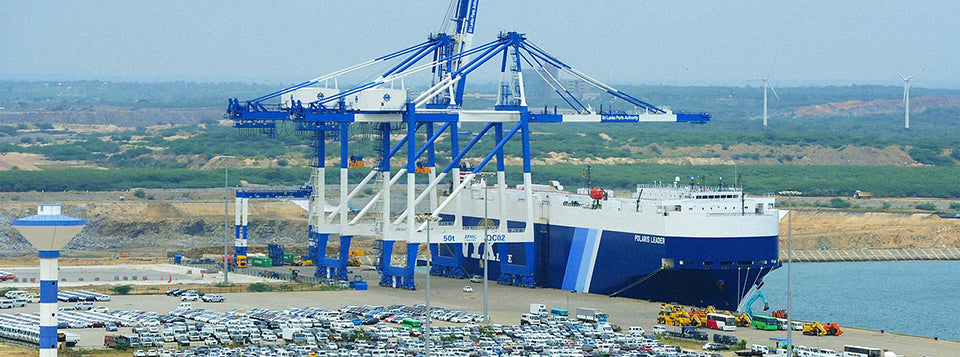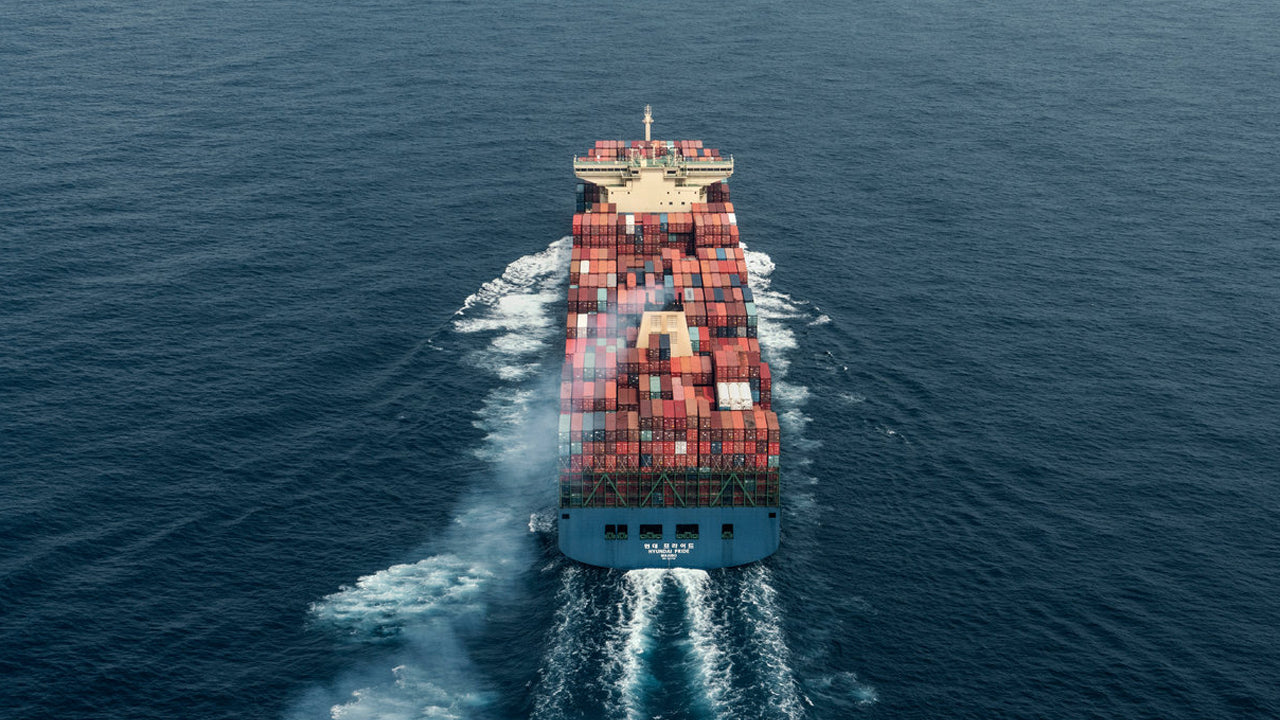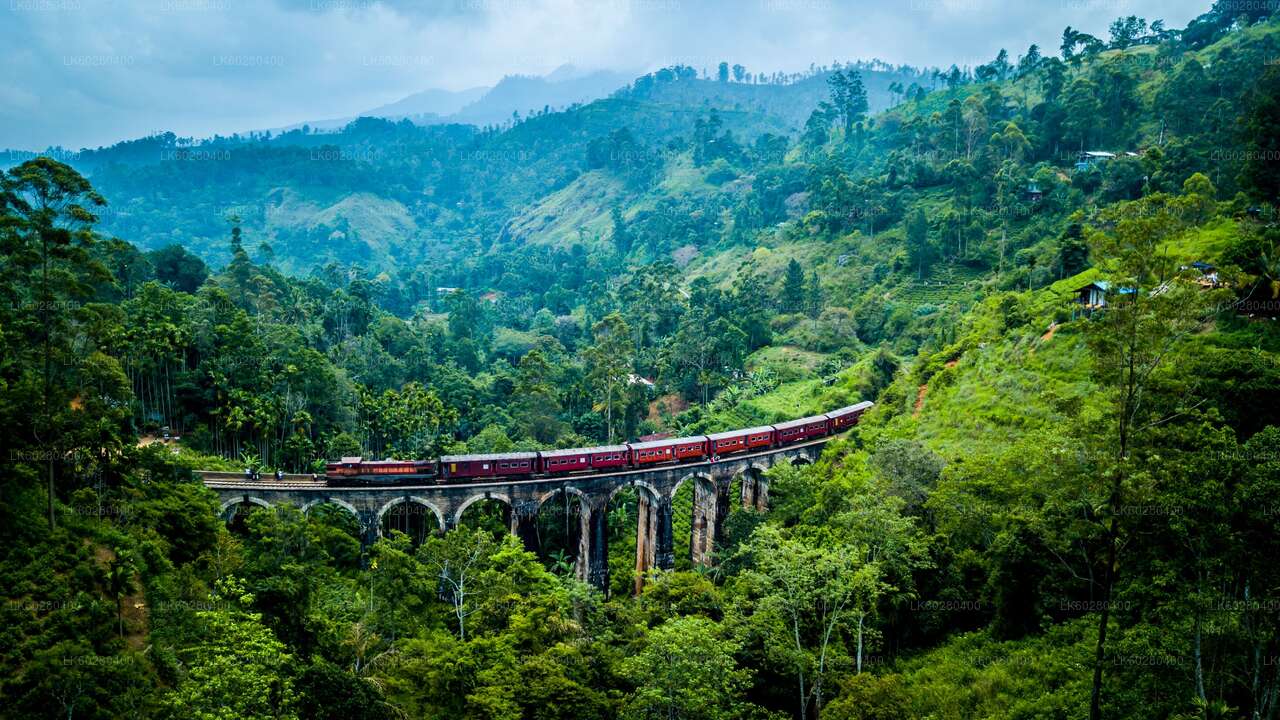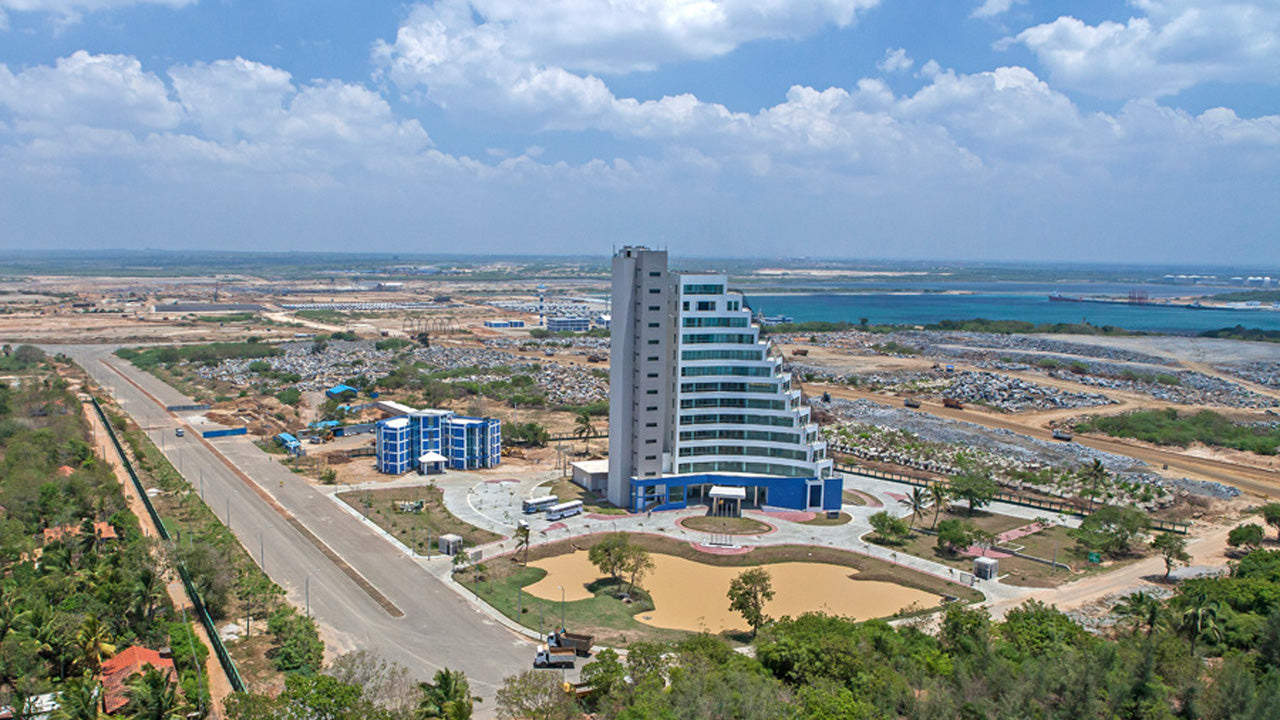
Puerto marítimo de Hambantota
El puerto marítimo de Hambantota, una puerta de entrada marítima estratégica en la costa sur de Sri Lanka, facilita el comercio global y el crecimiento económico. Con instalaciones de vanguardia, sirve como un centro clave de transbordo, conectando Asia con el mundo. Explore las oportunidades dinámicas y el importante papel que desempeña en el comercio regional.
Puerto marítimo de Hambantota
The Hambantota International Port (also known as the Magampura Mahinda Rajapaksa Port or the Magam Ruhunupura Mahinda Rajapaksa Port) is a deep water port in Hambantota, Sri Lanka. It opened on 18 November 2010 and is operated by Hambantota International Port Group (HIPG), a joint venture between the Sri Lanka Ports Authority and the partially Chinese state-owned China Merchants Port Holdings.
The Hambantota port is Sri Lanka's second largest port, after the Port of Colombo. In 2020, the port handled 1.8 million tonnes of LPG and dry bulk cargo.
Construction of the port commenced in January 2008. The Port of Hambantota serves ships travelling along the east-west shipping route that passes six to ten nautical miles (19 km) south of Hambantota. Later phases will increase the port's capacity to 20 million TEUs per year. However, the Hambantota port in 2016 made a revenue of US$11.81 million and incurred expenses of US$10 million as direct and administrative costs to report an operating profit of just US$1.81 million.
Down in the sunny south of Sri Lanka sits a special place called the Hambantota Seaport. It's like a big door that helps Sri Lanka trade with other countries all around the world. Made with help from China, this port is super modern. Big ships full of stuff like toys, clothes, and food can come and go easily. It's like a big hub where things can move from one ship to another, making trade faster and smoother.
But, there have been some problems along the way. Some people worry that Sri Lanka might owe too much money to China because of building the port. However, Sri Lanka is still hopeful about the port's future. Besides just moving stuff around, the Hambantota Seaport is also creating new jobs and opportunities for people nearby. They're planning to build new places where companies can work and store things, which will bring even more jobs to the area. So, even though there have been some bumps in the road, the Hambantota Seaport is still sailing ahead, bringing hope for a better future for Sri Lanka's southern region.
Acerca del Distrito de Hambantota
Hambantota es una ciudad rural en la zona costera sureste de Sri Lanka. También es la capital del Distrito de Hambantota, en la Provincia Sur de Sri Lanka. A unos 240 km de Colombo, Hambantota se encuentra en plena transformación para convertirse en un puerto estratégico y centro comercial, con un amplio desarrollo de infraestructura. Rodeada de extensas playas de arena, Hambantota es una ubicación ideal para visitar los lugares de interés cercanos.
El Parque Nacional Bundala se encuentra a 20 km al este de Hambantota y el Santuario Weerawila un poco más lejos. El Parque Nacional Ruhuna y el Templo Kataragama son otros atractivos a los que se puede acceder fácilmente desde esta ciudad.
Acerca de la Provincia Sur
La Provincia Sur de Sri Lanka es una pequeña área geográfica compuesta por los distritos de Galle, Matara y Hambantota. La agricultura y la pesca de subsistencia son la principal fuente de ingresos para la gran mayoría de los habitantes de esta región.
Entre los lugares de interés de la Provincia Sur se encuentran los santuarios de vida silvestre de los Parques Nacionales de Yala y Udawalawe, la ciudad sagrada de Kataragama y las antiguas ciudades de Tissamaharama, Kirinda y Galle. (Aunque Galle es una ciudad antigua, prácticamente no se conserva nada anterior a la invasión portuguesa). Durante el período portugués, dos famosos poetas cingaleses, Andare, de Dickwella, y Gajaman Nona, de Denipitiya, en el distrito de Matara, compusieron poemas sobre la gente común.









